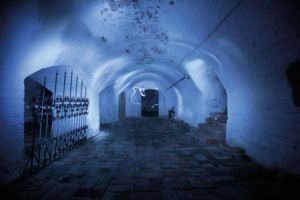News
Howl about this survey: A few skeletons in the closet, but not as spooky as its neighbours
This article is more than 7 years old.
No better time than Halloween to confirm how Denmark compares to other countries when it comes to scaring us rigid

Where things go bump and your heart starts to thump (photo: voergaardslot.dk)
Given the very existence of Dragsholm Castle and Voergaard Manor, it’s perhaps surprising to learn that Denmark is only the 35th spookiest country in the world.
The US are ‘The Shining’
The Paranormal Geography rankings compiled by Premium Tours assessed four categories: haunted locations, UFO sightings, horror movies and mythical creatures.
Given the Americans’ insatiable appetite for cinematic grislies and uncanny knack of uncovering extraterrestrial lifeforms, it’s no surprise to learn they’re ‘The Shining’ on this list, with the UK and Ireland taking the places of ‘The Exorcist’ and ‘Don’t Look Now’.
Not always what they seem
Nevertheless, Ireland finished top for UFO sightings, and the UK and Puerto Rico second, with the US in fourth equal, so in the immortal words of ‘The Phaedrus’ written by Plato: “Things are not always what they seem”.
Although the continuation of that quote could describe the absolute majority of UFO sightings: “The first appearance deceives many; the intelligence of a few perceives what has been carefully hidden.”
The macabre manor
Denmark is entitled to feel a little short-changed with its score for haunted locations: a lowly one out of ten – the lowest possible score.
Voergaard Manor in northeast Jutland, the most haunted dwelling in the country according to the Danish Paranormal Society, has a reputation that goes back to the early 1600s following the death of the lady of the manor, Ingeborg Skeel.
Skeel was either a paragon of virtue or incredibly cruel – a generous donator to nearby workhouses, she also apparently cut off the fingers of peasant children who stole grain from her fields – but for some reason her ghost won’t stop patrolling the manor’s corridors to the point she has become the old house’s biggest attraction.
The creepy castle
While Dragsholm Castle in northwest Zealand has no fewer than three resident ghosts.
The White Lady, who likes to scratch the walls, is the spectre of a young girl who disappeared in around 1550 after her father, who had promised her in marriage to a nobleman friend, discovered she was pregnant. His solution was to entomb her in the castle’s walls forever – a bit like Han Solo in ‘The Empire Strikes Back’. Dismissed as fake news for centuries, a skeleton was found in the walls in 1910 – cue the Twilight Zone theme tune!
The Grey Lady, meanwhile, is a friendly spook who patrols the grounds out of gratitude to the resident matron who, instead of punishing her for stealing from the castle, gave her a job.
And finally, James Hepburn, the Earl Of Bothwell and third husband of Mary Queen of the Scots, spent the last decade of his life in the castle’s dungeon, chained to a pillar. His favoured vehicle of haunting is the ghostly funeral carriage that took his body to nearby Fårevejle Church – but no headless horseman, you can’t have everything.
In fact, with ghosts like that – the scratcher, caretaker and undertaker – no wonder Denmark is only 35th on the list.










































